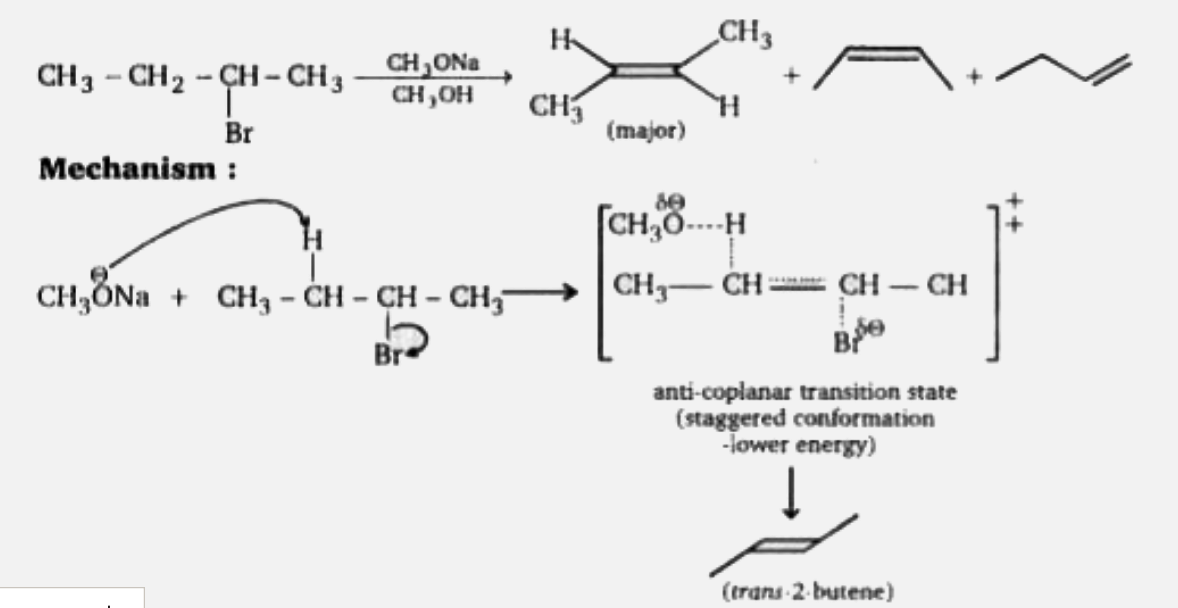Increasing the concentration of an electrophile in a typical SN2 reaction by a factor of 3 and the concentration of the nucleophile by a factor of 3 will change the reaction rate to :Solution in Telugu
increase by a factor of 6
increase by a factor of 9
decrease by a factor of 3
remain about the same
The correct Answer is:B
Rate of SN2 = K [ Substrate] [Nu]
Topper's Solved these Questions
- BOOK - MS CHOUHANCHAPTER - ALKYL HALIDES (SUBSTITUTION REACTIONS)EXERCISE - LEVEL-241videos
ALKYL HALIDES (SUBSTITUTION REACTIONS)
- BOOK - MS CHOUHANCHAPTER - ALKYL HALIDES (ELIMINATION REACTION) EXERCISE - LEVEL-225videos
ALKYL HALIDES (ELIMINATION REACTION)
- BOOK - MS CHOUHANCHAPTER - AMINESEXERCISE - Level-21videos
AMINES
Similar Questions
The order of the nucleophilicity of F−,Cl−,Br−andI− in protic solvents is
02:24View SolutionComprehension
E2 raction → Elimination bimolecular
In the general mechanism of the E2 reaction a strong base abstract a proton on a carbon atom adjacent to the one of the leaving group. As the abstracts a proton , a double bond forms and the leaving group leaves.

Identify the rate ofreaction of given compounds in E2 reaction:
 01:44View Solution
01:44View SolutionFive amine syntheses are outlined below. In each reaction box enter a single letter designating the best reagent and conditions selected from the list at the bottom of the page.

 02:24View Solution
02:24View SolutionIn the reaction A+B hArr AB , if the concentration of A and B is increased by a factor of 2 , it will cause the equilibrium concentration of AB to change to
02:24View SolutionFor the reaction A→ Products, it is found that the rate of reaction increases by a factor of 6.25 when concentration of A increases by a factor of 2.5. Calculate the order of reaction with respect to A.
02:38View SolutionIncreasing the concentratin of a nucleophile in a typical SN2 reaction by a factor of 10will cause the reaction rate to:
04:27View SolutionDecreasing the concentration of an electrophile in a typical SN2 reaction by a factor of 3 will cause the reaction ratio to:
View SolutionIncreasing the concentratuion of an electropille in a typical S_(N^(2)) reaction by reaction by a factor of 3 and the concentration of the nuckleophile by a factor of 3 will change the reaction rate to:
06:24View SolutionThe reaction A+B→ products is first order in each of the reactants.
(a) How does the rate of reaction change if the concentration of A is increased by factor 3 ?
(b) What is the change in the rate of reaction if the concentration of A is halved and concentration of B is doubled ?View SolutionWhat will be the order of the reaction if doubling the concentration of a reactant increases the rate by a factor a factor of 4 and tripling the concentration of the reactant by a factor of 9 ?
02:39View SolutionFor a reaction : A rarr Products it is found that the rate of reaction increases by a factor of 6.25 when the concentration of A is increased by a factor of 2.5 . The order of the reaction with respect to A is :
02:51View SolutionIf I increase the concentration of nucleophile the rate of reaction will?
02:38View SolutionWhat will be the order of the reaction if doubling of the concentration of the reactant increases of the rate by a factor of 4 and tripling the concentration of the reactant by a factor of 9.
01:57View SolutionIn the reaction A+B⇔AB, if the concentration of A and B is increased by a factor of 2, it will cause the equilibrium concentration of AB to change to
View SolutionFor the reaction A rarr Products, it is found that the rate of reaction increases by a factor of 6.25 when concentration of A increases by a factor of 2.5 . Calculate the order of reaction with respect to A .
View SolutionFor a reaction A rarr Product. It is found that the rate of reaction increases by a factor of 6.25 when the concentration of A is increased by a factor of 2.5. The order of reaction with respect of A is
View Solution
